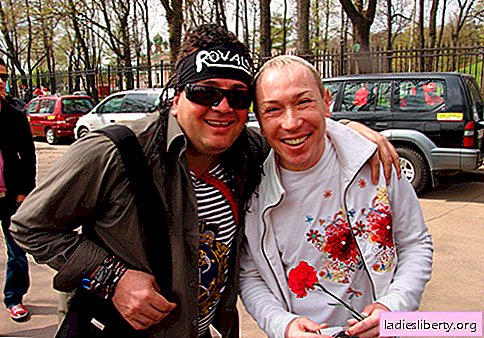
Holidays January 11th
Republic Day Albania
The seizure of Albanian territory by fascist Italy dates back to 1939. It was at this time that the Albanian Constitution was abolished, and a local fascist party was organized in the country. A year later, the Albanian army joined the Italian armed forces. From that moment on, partisan detachments against the fascists began to form. Religious leaders and representatives of the local intelligentsia led such detachments. The Communist Party in this republic was organized in the month of November 1941, by separate communist groups. During the collapse of the Italian army, the Germans forced the occupation of cities that were on the coastal plain. Fascist Germany in 1943 took Albania into occupation, but a year later, the Germans were forced to retreat, they were not able to resist the onslaught of Albanian troops. Thanks to the efforts of the Albanian National Liberation Army in 1944, the last invaders were expelled from the territory of Albania. After two years, the government declared the People's Republic of Albania, it was a very important fact in the life of the state.
International Day of "thank you"
This is the most polite date of the year, because it is on this day that residents of the whole world show maximum courtesy to others. Good manners in people's lives are of great importance. They are simply necessary, and people should use them in everyday life. We often say thanks, but never think about the meaning of this or that phrase. Many expressions actually have great magical meaning, and bring people joy, express attention, with the help of them people share positive emotions. Without words of gratitude, our life really becomes gray and monotonous. It’s not without reason that in various tourist guides to foreign countries, it is said that, when communicating with local residents, they say the word “thank you” with the accent of the country in which you are located. Almost everyone understands this word, it contributes to an increase in the speed of service, and generally creates the conditions for organizing a relaxing and enjoyable vacation. The Russian word "thank you" has been rooted since the 16th century, and is a derivative of the phrase "save God." The English counterpart of the word has a deeper meaning than ordinary gratitude. In general, any "thank you" is an integral part of completely different cultures and peoples. It is interesting that the Old Believers do not use this word at all because they think that it came from the phrase “save the Bai”. Old Believers are sure that Bai is one of the pagan gods. Psychologists are of the opinion that such words like “thank you” are used as “oral smoothing,” which can instill peace and warmth in a person’s soul. Words of gratitude must be pronounced from the heart, it is believed that it is then that they will have the meaning embedded in them initially.
Day of reserves and national parks
According to historical data, they began to celebrate this day in 1979. Its instigators were representatives of the center, which was engaged in wildlife conservation and a specialized fund, which worked in the same direction. The date of this holiday was not chosen by chance, on this day in Russia in 1916 the first Barguzinsky Reserve was formed. Even in antiquity in Russia, increased attention was paid to various natural territories, because the then nobles, kings and princes hunted in them. They created the first reserve in order to protect the Barguzin sable that lived there, and other animals. By a decision adopted by UNESCO in 1986, a biosphere ostrich was brought to this reserve, after which the reserve was included in the international list on which biosphere reservations arrive. Today, this reserve is a part of the World Natural Heritage, which belongs to Lake Baikal, like other reserves and national parks that are part of the “reserve necklace”. It includes the Barguzinsky, Baikal, Baikal-Leninsky reserves, and the Trans-Baikal park. In the Russian Federation, the number of protected areas exceeded the hundredth mark. To date, their area is indicated by the figure of 34 million hectares, which corresponds to about 1.5% of the entire territory of the state. Natural heritage has national parks in all, 35 of them, covering an area of 7 million hectares. Thanks to all these lands, a large number of representatives of the beautiful flora and fauna are preserved. Due to the constant deterioration of the general environmental situation in all world countries, this reserved necklace is of particular value to the state.
January 11th in the folk calendar
Scary day
This day was called so, because it was believed that it was on this evening that unclean forces raged. In order to protect themselves from her intrigues, people performed certain rites. From the ritual Red Hill, which was located near each village, the peasants brought the stakes they had left there earlier and put them in their yard. The peasants shook the straw from their bed and covered the stakes with it. After that, the local healer brought coal from the stove and made a fire. People believed that in this bonfire all diseases and misfortunes burn out. In ancient times, many scary stories were invented related to this day. These horror stories and fairy tales were told to children when evening came. Also, according to tradition, riddles were made. An ancient tradition existed on this day, it was necessary to protect children from dark forces with great attention, this was done with the help of prayers, rituals and good care. To protect the kids from evil spirits, they had to put amulets in the crib: a piece of bread, a blooming thistle, a special bone from the head of a fish, usually it had the shape of a coin. Serious problems were caused by perfumes that prevented the child from sleeping at night. In order for this to not happen in the cradle, the girl had to put a spindle, and the boy, having done all this, the parents read a special conspiracy, it was believed that after that the child would sleep peacefully and no perfume would interfere with him. In addition, there was another custom, under the cradle with a child it was necessary to put an ax and a sickle, because sharp steel protected from all evil spirits. At a time when parents guarded their children, youth engaged in gatherings. The holy days were still going on, and even a gulba of evil spirits could not prevent the boys and girls from having fun. On this day, they also paid special attention to the weather. Knowledgeable peasants said if the north wind blows, but there are no clouds in the sky, this meant that severe frosts would soon hit.
Historical events of January 11
1919 year introduction of food surplus
The main purpose of the surplus appraisal was to fill state bins with food. The peasants, without fail, were instructed to hand over the "surplus" of agricultural products to the state. The surplus appraisal was a necessary measure in the fight against devastation and famine. The surplus-appraisal was the first stage in the transformation of the Soviet economy, popularly called "war communism." In the period from 1919 to 1920, the surplus surplus reached enormous proportions. Food seizures included: grain, meat, butter, honey and potatoes. And by the end of the 20th year, the food tax was applied to almost all food products. Anti-Bolshevik uprisings flared up in all parts of Russia, in connection with which the Bolshevik "government" was forced to weaken the food pressure on the peasantry. And on March 21, 1921, the Council of People's Commissars of the RSFSR canceled the surplus appraisal and introduced a fixed food tax. This decision reassured the peasantry and became a preparatory stage before the introduction of the NEP.
1917 year the first Soviet reserve was created
The reserve was founded on January 11, 1917 and named Barguzinsky. However, to a greater extent, this reserve was a hunting ground created on state lands. The main objective of the reserve was to preserve and reproduce the sable, a valuable fur-bearing animal. The reason for creating such a reserve was the uncontrolled shooting of the sable, which led to a menacing decline in its population. Once, sable was abundant in the territories from the northern Urals to Sakhalin. The reserve was created on the initiative of the hunter A. Silantyev. The place of creation of the reserve was determined by sparsely populated areas of Lake Baikal. At the time of the foundation of the reserve, no more than thirty sable individuals were found in the territory designated for its location. But by the end of the Soviet period, there were already about 1,200 fur-bearing animals in the reserve. The reserve territory is a unique biological laboratory, strictly protected from external interference. Only scientists and a limited tourist contingent are allowed into the conservation area. An interesting museum of the reserve’s history is located on the territory of the reserve. The Barguzinsky Reserve is located on the western slope of the Barguzinsky Range, its area is 374 thousand hectares. The territory of the reserve is amazingly beautiful, the reserve is indented with low mountains and hills covered with dense forest. The reserve is characterized by a peculiar flora and fauna, as well as a special microclimate. UNESCO has included the Barguzinsky Reserve among the unique protected areas.
1940 year first ballet "Romeo and Juliet" presented in Leningrad
In 1935, Prokofiev finished work on the music for the ballet Romeo and Juliet. For the first time this work Sergei Prokofiev played in the Beethoven Hall, the Bolshoi Theater. The composer wanted the ballet production of Romeo and Juliet to be staged in his work. However, both the theater and a number of other spectacular institutions refused to stage the ballet to the music of the author. At that time, any cultural initiative was under the scrutiny of the authorities, and if it went against the political course of the Communist Party or did not quite fit into the framework of the political line, then such an initiative had no chance of implementation. As a result of the most severe Soviet censorship, the creation of Prokofiev was first performed in 1938 in the city of Brno (Czech Republic). At the local opera house. In the USSR, the work of an outstanding composer was first performed on January 11, 1940, at the Leningrad Opera and Ballet Theater. The work consisted of three acts, thirteen paintings, a prologue and an epilogue. In the role of Juliet was the great Galina Ulanova. The ballet, staged to the music of Prokofiev, became the pride of Russian art, and the composer was recognized as the greatest composer of the twentieth century. In memory of the famous ballet, in St. Petersburg, a bust of the great Ulanova was installed on the avenue of heroes.
1909 year The world's first women's car racing started
The famous race took place in January 1909 in the United States. The race went down in history thanks to the participation of women racers. About twenty cars took part in the race. Racers started in New York. The final destination of the competition was the city of Philadelphia. Women have previously participated in rallies, however, along with men's teams. For example, in 1901, Camilla du Gas participated in the rally Paris - Berlin. In the 1920s, Czech Elishka Junkova became famous at auto racing. She won 56 cups, and for this she needed only 4 years. However, in 1928, her husband died at Yunkova, and the famous racer left her career. In the 60s, the racer Patricia Moss became widely known, she managed to win in many racing competitions of that time, but she soon got married and left her sports career. The Soviet Union also had its own racers. The most famous were I. Alisauskene and R. Krikstamponene. In 1988, these women became masters of sports in rally racing. The participation of women in racing sport has proved to society that in this area, women are not inferior to men in any way.
2004 year Train Incident No. 1908
The incident happened on January 11, 2004 on the line of the October railway. The cargo train, weighing 5,000 tons, driven by the electric locomotive VL15-018, lost control and began to pass unauthorized signals of semaphores uncontrollably. In addition, the composition cut off the turnout and switched to a parallel line of movement. The train passed station after station in no way, without responding to the light signals of the semaphores and to the alarm messages of the station controllers. As it turned out later, the cause of the incident was a mental illness attack, while the train driver was in a state of psychosis, the driver turned off all control devices for the movement of the train and thus lost control of the train. The assistant driver, who was nearby, tried to prevent the dangerous actions of the sick driver and tried to stop the train, but the distraught driver abruptly stopped these attempts. In addition, he began to threaten his assistant with physical harm. They managed to stop the train only an hour after the start of its uncontrolled movement. For this, the contact network was de-energized. The culprit of the incident was the engineer Eduard Gorchakov, born in 1973. Gorchakov worked as a driver since 2000, at work he was characterized as an honest and conscientious worker. However, colleagues noticed his some isolation and lack of sociability. He was married twice, but in both cases unsuccessfully, there are three children from marriages. When undergoing medical examination upon admission to work, I did not find any mental abnormalities. After the incident, he was dismissed from the railway department and sent for treatment at the PND.
Born on January 11
Konstantin Khabensky (1972 ...), Russian actor
Born in January 1972 in Leningrad. The family lived for a short time in the north. After graduating from school, Kostya entered the Aviation Instrument Engineering College, but after studying there for 3 years, he left training. Without a complete education, the future actor was forced to work wherever he could. He worked as a janitor, and a floor polisher, and a street musician. With great difficulty, Kostya managed to graduate from the Leningrad Theater Institute. As a student, Khabensky begins to play in the theater, he is trusted, including major roles. Khabensky first starred in the movie in 1994, in the film "To whom God will send." After the institute, the actor starred a lot and worked on television, mainly as the host of various shows. The most famous works of Khabensky were roles in the films "Women's Property", "Deadly Force", "Night Watch" and "Day Watch". Currently, the actor is very popular and in demand both in the theatrical sphere and in the cinema.
Victoria Platova (1965 ...), writer
Vika Platova was born on January 11 in 1965. She graduated from the All-Russian State Institute of Cinematography, the department of screenwriting, but did not find herself in the cinema. After an unsuccessful movie debut, Victoria took up literary work. The first publishing house with which the young writer began to collaborate was EKSMO. In this publishing house Platova published 11 novels. Among the first: "In a quiet pool", "Death at the tip of the tail", "Taxi for an angel" and others. Among her colleagues in the "shop" Platova’s work immediately stand out for her deep erudition and high professionalism. In her novels, Victoria clearly builds plots, images, details and historical data. Most readers associate reading Platova books with watching a movie, as everything is described vividly and professionally. Since 2002, Platova’s books have been published by the Astrel topographic association.Her novels have been translated into a number of European languages. Victoria's novel "8-9-8" gained particular popularity among readers and was nominated for a prestigious award. Currently, Victoria Evgenievna continues her literary work, lives in St. Petersburg.
Reinhold Glier (1875-1956), Soviet composer
Born on January 11, 1875 in Kiev. The boy made music against the will of his parents. Glier studied at the Kiev College of Music. He entered the Moscow State Conservatory in 1894. He studied in the violin and composition class, graduated from a musical educational institution with a gold medal. In addition to music, the young man successfully studied philosophy, literature, and history. He teaches at the Kiev State Conservatory. Since 1920, Glier went to Moscow, where he began to teach at the local conservatory. Glier became a teacher and mentor for future famous composers: B. Aleksandrov, L. Knipper, A. Khachaturian and others. During his creative life, Glier wrote a large number of musical compositions, operettas, ballets, symphonies. In addition, the composer created instrumental concerts, sacred music, chamber and instrumental compositions. He wrote music for cartoons and films. The composer became the author of the first Soviet ballet production "Red Flower". The ballet was staged at the Bolshoi Theater. Glier constantly toured the country and performed as a pianist conductor. In 1938, the composer was awarded the title of People's Artist of the USSR.
Vladimir Vengerov (1920-1997), Soviet director
Vladimir Yakovlevich was born in January 1920 in Saratov. During the war, he was in the embankment in Alma-Ata, where he studied at the evacuated VGIK. His teacher and mentor was the great Eisenstein. In 1944, Vengerov began working as an assistant director at the Mosfilm studio. Having not worked for a long time at Mosfilm, Vengerov transferred to the Lenfilm studio. In 1945, Vengerov assisted the director Friedrich Ermler on the set of The Great Turn. The film tells about the most heroic battle of the Second World War - Stalingrad. The film received the Golden Palm Branch at the Cannes Film Festival. In addition to directing, the master teaches acting at a theater institute in Leningrad. The first independent works of the director were films, "Dagger" and "Two Captains". Films received tremendous success for that time. His best adult film is considered the painting "Worker Village", shot in 1965. The film is dedicated to working youth after the war. Outstanding actors, Oleg Borisov, Lyudmila Gurchenko, Tatyana Doronina, Lyubov Sokolova, starred in it. Next, no less famous paintings were shot: "The Living Corpse", "Karpukhin", "Strogov", "Second Spring", "Testament", etc.
Fedor Enakiev (1852-1915), Russian industrialist
Born January 11, 1852 in a hereditary noble family. The family was originally from the Kherson province. The Enakiev family was large, the parents had seven children. After graduating from high school, Fyodor went to study at the Engineering Institute of Railways. After his graduation, he began to work as an ordinary engineer on the railway. Soon Fedor Egorovich became a member, and then director of the Baltic Railway Society. In 1885, Fedor marries Anna Vinberg, five children are born to the spouses. Enakiev is developing a charter of the Russian-Belgian Society of Metallurgists, which soon approved the government of the Russian Empire. In the same year, under the leadership of Enakiev, the construction of the Enakievo steel plant begins. Engineer Enakiev designs and builds the Shterovka-Mariupol railway line. Yenakiev also established the Russian-Persian non-ferrous metal mining society. Mining operations began in Persia in 1901. In the early 1910s, Enakiev and Benoit developed a daring project to transform the capital of the empire, St. Petersburg. The project also involved the construction of the subway, but it did not come to its implementation.
Birthday January 11
Anna, Mark, Evdokia, George, Benjamin, Barbara, Natalia











